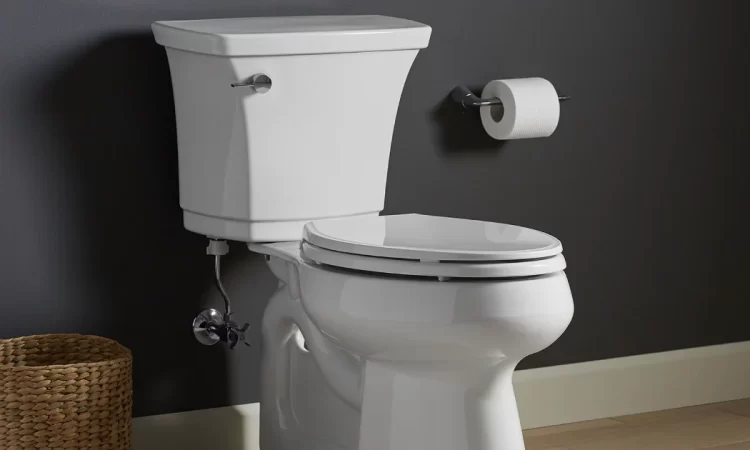
In modern interior design, every element plays an essential role in shaping the overall aesthetics and functionality of a bathroom space. That means, when the point is of bathroom design, one of the factors that is often overlooked is a toilet seat. Apart from its basic function, it also serves as a blending style and utility that adds comfort and visual appeal to the bathroom environment.
So, keeping this in mind, let’s explore all about toilet seats in terms of style and utility.
Toilet Seats: Offering Style and Utility
- Ergonomic comfort
Toilet seats come in varied shapes, sizes, and materials, and each of these offers perfect comfort and features. However, the contour and padding of the toilet seat majorly impact the overall user experience. That means the toilet seats that are ergonomically designed offer proper comfort concerning the body.
While manufacturing the seats, designers also consider the individual body’s natural movements as well as dimensions so that they offer comfort up to a high extent.
- Aesthetic enhancement
The aesthetic enhancement of toilet seats plays an essential role in elevating the overall decor of a bathroom. Most designers and manufacturers deliver various styles, colors, and finishes to cater to various design preferences.
If you talk about designs, sleek, minimalist toilet seats contribute to a modern and contemporary look, while ornate designs or patterns can add a touch of classic elegance. However, materials like high-quality ceramics, wood, or even innovative materials like resin-based compounds provide options for different textures and finishes.
Customization options, like soft-close mechanisms and decorative seat covers, allow homeowners to personalize their spaces further. Combining complementary or contrasting colors with the bathroom’s overall palette can create visual interest and harmony.
Ultimately, aesthetically pleasing toilet seats enhance the bathroom’s visual appeal, transforming it into a stylish and cohesive space that reflects the homeowner’s taste and design sensibilities.
- Space optimization
Toilet seat selection plays an essential role in optimizing bathroom space. However, by choosing compact designs or foldable seats, toilet seat designers can make the most of limited room. Additionally, these space-saving options enable efficient movement, allowing for a more open and user-friendly bathroom layout.
Consequently, individuals can navigate the space comfortably, enhancing the overall usability of the bathroom. Moreover, by utilizing these innovative designs, homeowners can imagine a larger area, even in small bathrooms. Therefore, judiciously selecting toilet seats not only saves space but also enhances the bathroom’s functionality, making it a more practical and enjoyable space for everyone.
- Environmental Considerations
Environmental considerations in toilet seat design are vital for promoting sustainability. Manufacturers now prioritize eco-friendly materials and water-saving technologies. However, by utilizing sustainable materials like bamboo or recycled plastics, toilet seats reduce the demand for new resources, conserving nature. Moreover, water-saving mechanisms, such as dual flush systems, conserve water with every use, promoting responsible usage.
Additionally, some toilet seats feature coatings that are free from harmful chemicals, ensuring a safer environment. By embracing these practices, designers, and homeowners actively participate in eco-conscious choices, minimizing the ecological impact. Consequently, eco-friendly toilet seats not only enhance the bathroom experience but also play a significant role in preserving our environment for future generations.
- Hygiene and Maintenance
Maintaining hygiene in the bathroom is essential, and toilet seats play a vital role. Fortunately, modern toilet seats are designed with easy maintenance in mind. They often come with antimicrobial coatings, which inhibit the growth of bacteria, ensuring a cleaner surface.
Moreover, choosing toilet seats made from materials like plastic or resin makes cleaning a breeze as they are non-porous and resist stains. Additionally, soft-close mechanisms prevent slamming, reducing wear and tear and making cleaning more straightforward. Regular cleaning with mild, non-abrasive cleaners ensures long-lasting hygiene.
By consistently considering these aspects, users can maintain a clean and sanitary environment effortlessly. Consequently, these thoughtful design features and cleaning practices enhance the hygiene and durability of toilet seats, making them a practical choice for any bathroom.
- Universal Design and Accessibility
Toilet seats are also designed keeping disabled and people with limited mobility in mind. For example, raised, elevated, grab bars, etc, are user-friendly designs for these kind of people. In short, toilet seat designers prioritize inclusivity that creates space for people of all ages and abilities.
The Bottom Line
The role of toilet seats in overall bathroom design goes far beyond its functionality. Almost every designer and homeowner these days wants to make their place appealing and comfortable as well as hygienic. However, by considering ergonomic comfort, hygiene, aesthetics, space optimization, universal design, and environmental impact, you can make informed choices when selecting toilet seats.
These considerations ensure that the bathroom not only meets the practical needs of its users but also offers a relaxing and aesthetically pleasing retreat within the home. As the bathroom continues to evolve as a sanctuary for self-care and relaxation, the role of toilet seats in its design will remain pivotal, shaping the overall experience of those who use this essential space.



